A world where the oceans are frozen solid, perhaps a kilometer thick. Giant sheets of ice cover everything from the poles all the way down to the equator. This isn’t a made-up story; this was our planet, Earth, a long, long time ago!
It’s called Snowball Earth. During a time known as the Cryogenian Period (about 720 to 635 million years ago), our planet experienced the most extreme ice ages it has ever seen. The entire globe was locked in a deep freeze that lasted for millions of years.
Understanding how life survived this global deep freeze is a testament to its incredible resilience.
Don’t Miss This!
After reading, challenge yourself with our interactive quiz at the end. Click here to take the Quiz
Table of Contents
How Do You Freeze a Whole Planet?
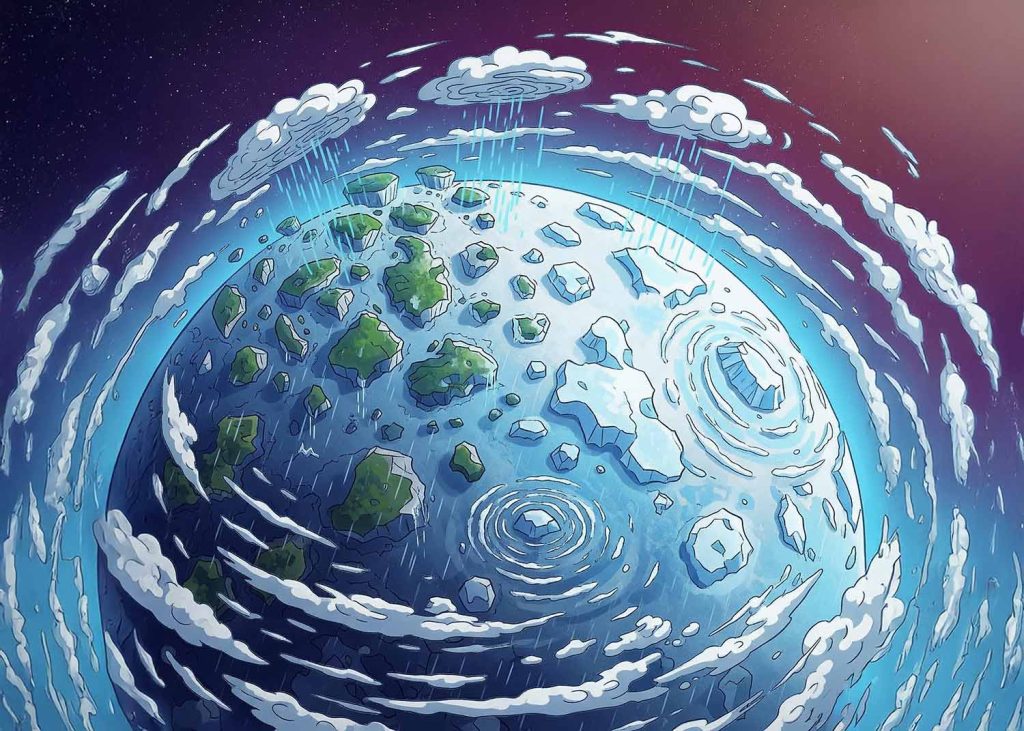
A chain reaction of events, including continental breakup and increased ice reflection, led to the Snowball Earth state.
So, how does a warm, watery planet like Earth turn into a giant Snowball Earth? It’s a bit like a chain reaction, where one thing leads to another, making the problem worse.
Scientists think it started with a few key events:
- Continental Breakup: A supercontinent called Rodinia began to break apart, creating lots of new coastlines.
- Increased Rainfall: More coastlines led to more rain.
- CO2 Removal: As rain falls, it washes a gas called carbon dioxide (CO2) out of the air. CO2 is a greenhouse gas that acts like a blanket to keep the Earth warm.
With less CO2 in the air, the planet started to cool down significantly.
As the Earth cooled, ice sheets began to grow at the North and South Poles. This is where the chain reaction really sped up because ice is super shiny!
It reflects a lot of sunlight. As more ice formed, more sunlight was bounced back into space, making the Earth even colder. This is called the ice-albedo feedback loop.
“Once the ice sheets grew past a certain point… this chain reaction became unstoppable. The whole planet quickly froze over.”
It was a super-fast freeze, geologically speaking! This dramatic event was a crucial part of the Snowball Earth cycle.
How Did Anything Survive?
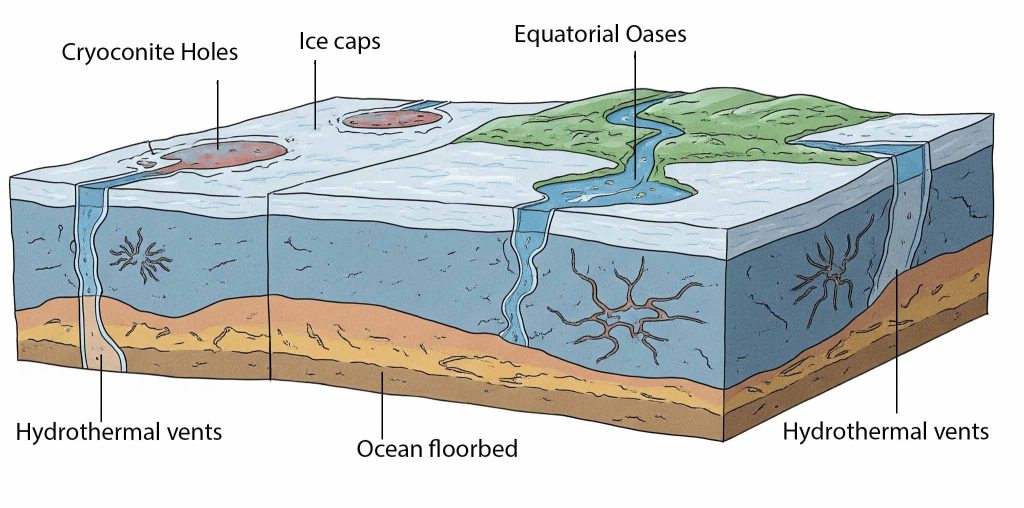
Despite the global freeze, life found ways to survive in hidden oases like hydrothermal vents and tiny meltwater puddles.
This is one of the biggest mysteries of Snowball Earth: how did life survive? If the oceans were completely frozen, how could tiny living things get sunlight to make food or even breathe?
Scientists have some clever ideas about where life might have hidden in “refuges” during this super cold time:
- Hydrothermal Vents: Deep down at the bottom of the ocean, there are cracks in the Earth’s crust called hydrothermal vents. Hot, chemical-rich water shoots out of these vents. Even if the whole ocean surface was frozen, these vents would still be warm and provide food for tiny creatures that don’t need sunlight to live. It was like a warm, secret oasis deep under the ice.
- Cryoconite Holes: Imagine a giant glacier. Sometimes, dark dust or rocks land on the ice. These dark spots soak up a little bit of sunlight, making the ice around them melt. This creates tiny puddles, called cryoconite holes, right on top of the ice. These little puddles could have been tiny, safe homes for microbes (super tiny living things) that could handle the cold.
- Equatorial Oases: Some scientists think that maybe, just maybe, a very thin strip of water near the equator (the middle of the Earth) didn’t freeze completely. It might have been slushy, like a giant Slurpee, but it could have been enough for some tiny algae to survive and make food from sunlight.
Life is incredibly tough. The fact that it made it through Snowball Earth shows just how amazing and strong living things can be!
The Great Thaw: Earth Melts Down
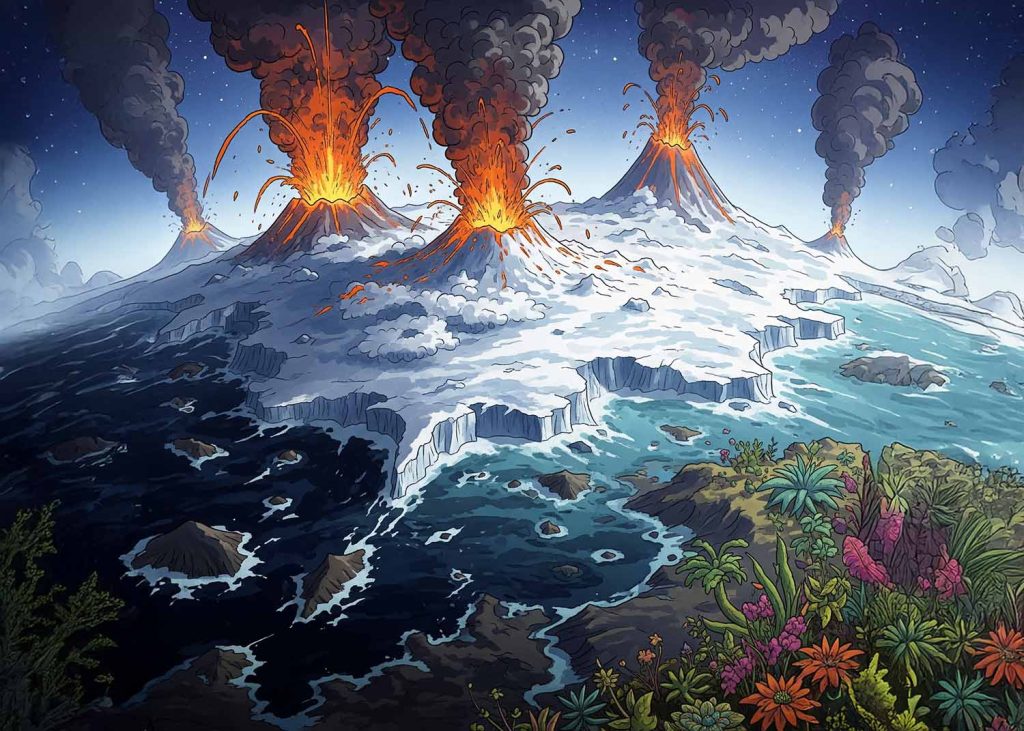
Volcanic activity continued during the deep freeze, eventually leading to a massive greenhouse effect that melted the ice.
Getting out of a Snowball Earth state was just as dramatic as getting into it! While the Earth was covered in ice, volcanoes didn’t stop erupting.
They slowly but surely pumped more and more carbon dioxide (CO2) into the air. Normally, the oceans would soak up this CO2, but they were trapped under thick ice.
The CO2 had nowhere to go. It just built up and built up in the atmosphere, like a giant, super-thick blanket.
Eventually, there was so much CO2 that it created a super-strong greenhouse effect. This made the planet get incredibly hot, very quickly!
The ice started to melt, and it melted fast. The transition from a frozen world to a super hot, watery world might have happened in just a few thousand years—which is super fast in Earth’s history!
Unlocking More Secrets
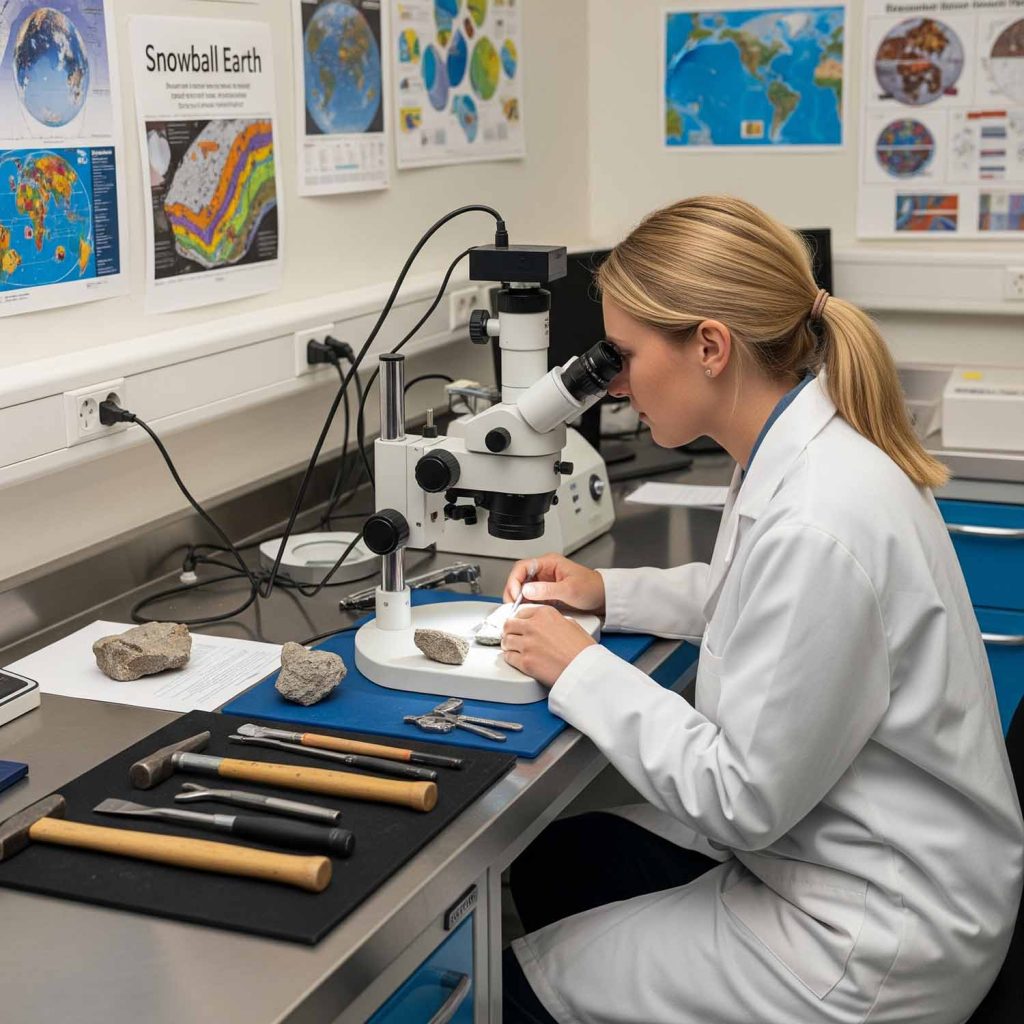
Scientists are always finding new ways to study Snowball Earth, and recent discoveries have provided exciting new clues.
In 2024, researchers found the first physical proof that glaciers reached the Earth’s equator. By studying ancient rocks in Colorado, they proved that the spot—which was at the equator millions of years ago—was once buried under the immense weight of a massive glacier.
“This was the first time we had physical evidence that the ice reached all the way to the equator, which is a cornerstone of the Snowball Earth theory.”
So, what could have caused such a deep freeze? One leading theory is a “double whammy” of low carbon dioxide. Scientists suggest that a period of low volcanic activity (which releases CO2) combined with a huge, newly exposed volcanic rock area in Canada that absorbed CO2 from the atmosphere, worked together to plunge the planet into ice.
But was it a “hard snowball” or a “slushball”?
- Hard Snowball: The entire planet was frozen solid.
- Slushball: Mostly frozen, but with some open, slushy water near the equator.
This is still a topic of debate, but the evidence of glaciers at the equator makes the “hard snowball” idea more likely than ever. These new discoveries help us understand not just Snowball Earth, but also how our planet’s climate works and how life can adapt to extreme changes. It’s like solving a giant puzzle that’s millions of years old!
A New Beginning for Life

The extreme conditions of Snowball Earth may have pushed life to evolve and diversify, setting the stage for the Cambrian Explosion.
This dramatic cycle of freezing and thawing had a huge impact on life. The extreme stress of Snowball Earth might have forced tiny living things to evolve and become more complicated.
When the ice finally melted, the oceans were full of new food and minerals. This was the perfect environment for life to grow and change even faster.
Many scientists believe that the end of Snowball Earth helped set the stage for the next big event in life’s history: the Cambrian Explosion. This was a time when life suddenly became super diverse, with all sorts of new, strange animals appearing.
So, even though Snowball Earth was a terrible time, it might have been exactly what life needed to become more complex and amazing.
The story of Snowball Earth reminds us that our planet has gone through some truly wild times. It shows us how strong and adaptable life is, and how even the biggest disasters can lead to new beginnings.
It’s a powerful lesson from Earth’s deep past.
Snowball Earth Quiz
How much do you know about the time our planet was a giant snowball?

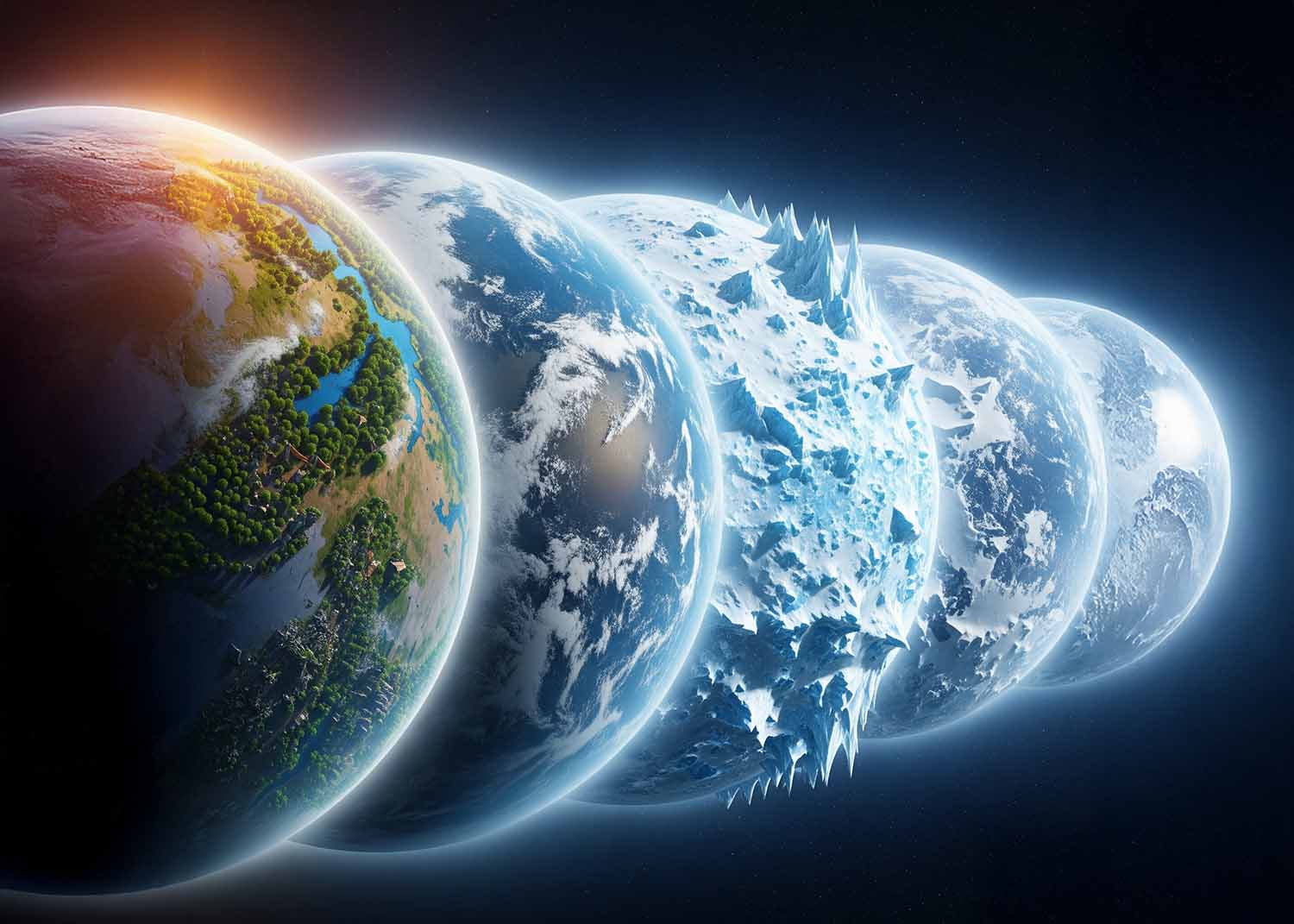
Leave a Reply